Heading into the wild with a heavy pack can really dampen the spirit of adventure. Imagine enjoying more freedom and less strain as you trek through nature’s paradises. This guide is packed with tips on selecting essential gear that won’t weigh you down yet keeps you prepared for whatever comes your way.
Dive in for a lighter load and brighter trails ahead!
Table of Contents
- Essential Lightweight Survival Gear
- Keeping Your Survival Gear Light
- Optional Add-On Lightweight Survival Gear
- Do I really need a survival kit?
- What if I’m just going for a short hike?
- A Typical Ultralight Survival Kit: 10 Must-Have Items
- Conclusion
- What Lightweight Survival Gear Options Have the Best Durability for Minimalist Backpackers?
- FAQ
- What are the essential items for a minimalist backpacker’s survival gear?
- How can I ensure access to safe drinking water while backpacking?
- What are the benefits of choosing multi-use items for backpacking?
- How can I keep the cost of my survival gear low?
- What should be included in a lightweight first aid kit for backpacking?
- How can I navigate safely while backpacking in the wilderness?
- What are some tips for packing light without sacrificing essential items?
- Can minimalist backpacking still ensure safety and preparedness?
Key Takeaways
- Choosing multi-use items saves space and weight in your backpack. For example, a Swiss Army knife has many tools in one.
- Compact shelters like bivy sacks or lightweight hammocks are better than heavy tents for minimalist backpackers.
- Lightweight survival kits should include essentials like water filters, firestarters, navigation tools, and a first aid kit. They can all fit into a small bag that’s easy to carry.
- Water is key when hiking. Use light water filters like the Katadyn BeFree to drink safely from streams and lakes without carrying extra weight.
- Keep gear costs down. With smart choices, essential survival gear can cost under $160 in total.
Essential Lightweight Survival Gear
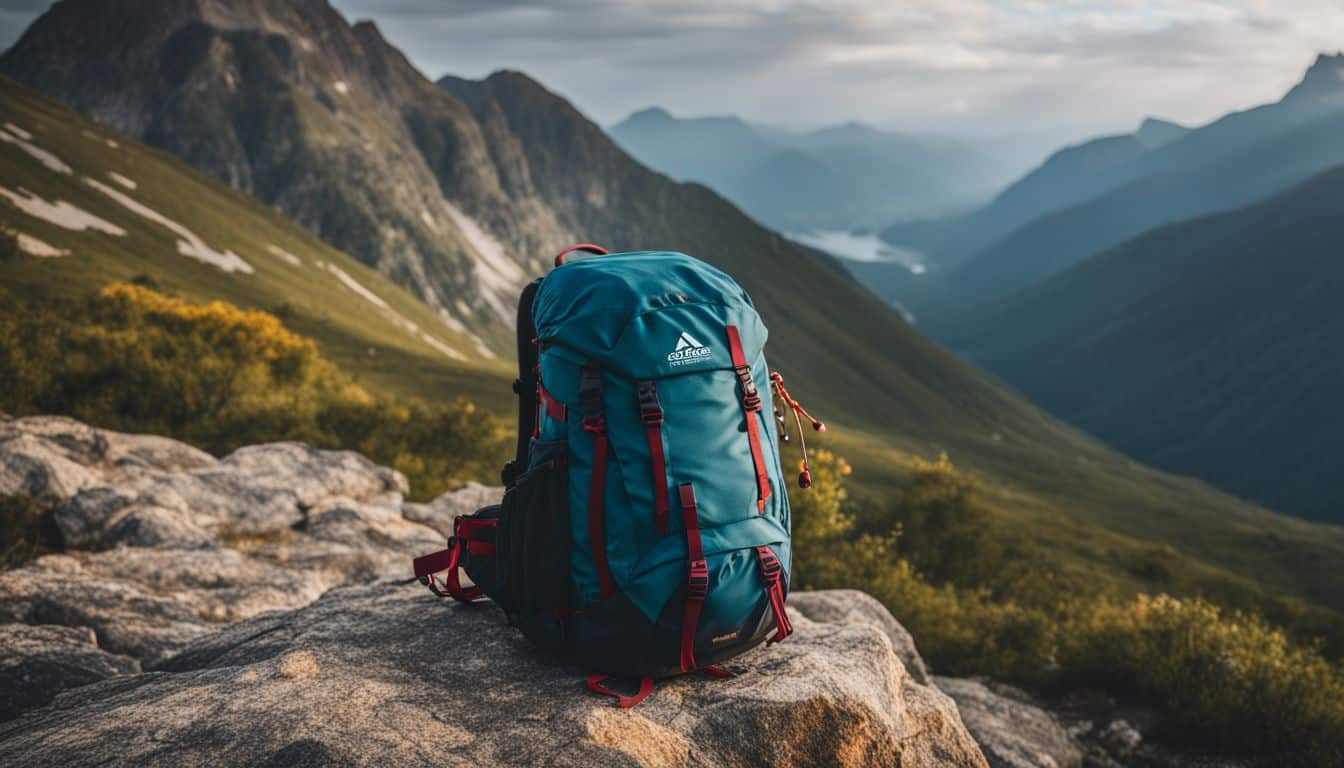
Navigating the wilderness with minimal baggage doesn’t mean leaving behind necessities; in fact, savvy backpackers know it’s all about balancing weight with preparedness. Our focus on essential lightweight survival gear ensures you’re equipped to face nature head-on, sans the extra burden.
Compact Shelter options
Bring a bivy sack or a lightweight hammock on your next adventure. These compact shelters are perfect for minimalist backpackers. They pack down small, making them easy to carry. Even better, they set up quickly if you need to rest after a long day’s hike.
Choose materials like GORE-TEX for waterproofing and breathability. Look for sleeping bags that work well with your shelter to stay warm at night. Sleeping pads add comfort without much weight.
With these items, you’ll have a cozy bed under the stars that won’t slow you down by day!
Lightweight Survival Food and Water Supplies
Once your shelter needs are covered, turn your attention to sustenance. Pack lightweight survival food that’s high in energy and easy to prepare. Think freeze-dried meals, energy bars, and nuts—foods that don’t weigh much but pack a nutritional punch.
They last a long time without spoiling and can be prepped with just hot water.
Water is vital for survival, so include effective water purification tools in your kit. A compact water filter fits easily into any bag and ensures access to clean drinking water from streams or lakes you might encounter.
Lightweight bottles or collapsible containers save on space while still holding enough to keep you hydrated between refills. Remember, staying fueled and hydrated keeps you alert and ready for the challenges ahead!
Getting lost is not an option in the wilderness; that’s why smart ultralight backpackers pack efficient navigation tools. A lightweight compass guides you when trail markers are missing or hard to see.
Pair it with a detailed map of the area, and you can confidently find your way through forests or up mountains.
For those who prefer tech, a hand-held GPS device like Garmin inReach Messenger fits the bill—you’ll have routes at your fingertips without adding bulk to your gear. Remember to check batteries and signal coverage before relying solely on electronic devices.
These tools are essential for safety and keeping track of your journey as you explore nature’s vast beauty.
Lightweight First aid kit
Pack a lightweight first aid kit to stay safe on the trail. It should include essentials like bandages, antiseptic wipes, and tweezers. Make sure it’s compact and fits easily in your pack or can latch onto your belt.
This kit is key for quickly handling cuts, scrapes, or bites.
Always have your first aid kit ready in a car or when hiking. You never know when you’ll need it while exploring the wilderness. With just enough supplies for a day or two, you’ll be prepared for any minor emergencies that come your way.
Keep it light, keep it handy!
Firestarters and Cooking equipment
Always carry reliable firestarters in your survival kit. Waterproof matches, a lighter, and a firesteel are must-haves because they work even when wet. For cooking gear, choose a 1-liter titanium pot with both handle and lid; it’s light and tough.
You can also add a flexible plastic spoon and fork if you like. Keep two different ways to make fire just in case one fails.
Cooking outdoors is easier with the right equipment. A lightweight backpacking stove paired with an alcohol fuel source gets meals ready fast without adding much weight to your pack.
Go for minimalism but ensure practicality—this approach keeps the wilderness survival experience focused on nature rather than gear management.
Multi-tool or Knife
You’ll want a tool that can handle a variety of tasks in the wild. A sturdy, reliable knife fits this need perfectly and is a must-have for minimalist backpackers. Think cutting rope, preparing food, or whittling wood to start a fire—your pocket knife will be your trusty companion.
Go for models like the Gerber LST Ultralight Knife if you’re aiming to keep your base weight down without sacrificing functionality.
Consider grabbing a multi-tool as well. They come with added benefits like scissors, screwdrivers, and tweezers packed into one compact package. The Swiss Army Knife or Victorinox Trekker could be your best bet here; they’re famed for their versatility and durability while still being light enough not to weigh you down on those long treks.
Remember, with either choice included in your survival pack, you’re ensuring readiness for numerous outdoor challenges without breaking the bank—the total cost of essential gear can stay under $160!
Homemade First Aid Kit
Pack your homemade first aid kit with just the essentials. Keep it small, no bigger than 5.5 x 7 x 1.5 inches and packed tight with crucial supplies. Include a knife for cutting bandages or fashioning splints, water purification tablets to stay hydrated safely, and fire-starting tools in case temperatures drop.
A flashlight will help you navigate the dark woods while a compass keeps you on track.
Make sure personal care items like blister pads and antiseptic wipes are inside too; they can prevent minor injuries from becoming serious problems. Your minimalist survival kit should be ready to handle emergencies for at least a day or two in the wild—without weighing you down.
Keeping Your Survival Gear Light
Maximizing every ounce in your pack counts, so stay tuned for our smart strategies on maintaining a featherweight kit without sacrificing essential survival items—your back will thank you.
Tips on packing light
Packing light is all about choosing what’s necessary. A minimalist backpacker brings only the essentials to stay safe and comfortable.
- Focus on multi-use items. Choose gear that serves multiple purposes, like a mummy bag that works as both a sleeping bag and extra padding.
- Pack a compact survival kit. Make sure it includes critical items like water filters, firestarters, and a knife in a small 5.5 x 7 x 1.5 inches bag.
- Opt for lightweight shelter options. Bivy sacks or ultralight hammocks are better than heavy tents.
- Bring Smart Water bottles instead of bulkier hydration systems; they’re reusable and can be paired with most water filters like Katadyn BeFree.
- Use clothing to maximize space. Roll clothes tightly and use them as cushioning or extra insulation if needed.
- Limit your food supply to just enough. Lightweight survival food like dehydrated meals or high-calorie bars won’t weigh you down.
- Select navigation tools carefully. A Garmin inReach Messenger can replace multiple devices, providing GPS services without extra weight.
- Create a homemade first aid kit. Include only vital supplies to handle minor injuries and illnesses.
- Consider an alcohol stove for cooking. It’s lighter than gas stoves and easier to pack due to its size.
- Go for folding knives rather than bulky fixed blades; they offer the same utility without the extra weight.
- Carry a smartphone with a USB-C or lightning connector as it can serve multiple functions—camera, GPS, notebook—with the right apps installed.
- Leave out big game hunting tools unless necessary for your trip; snares or leghold traps add unnecessary weight if you’re not actively hunting.
Importance of multi-use items
Multi-use items are your best friends on the trail. They help you cut down weight and save space in your backpack. Think about a compact shelter that can double as a rain poncho or protective groundsheet.
Or consider water filters like the Katadyn BeFree, which lets you drink directly from streams and fills up your bottles, too. Items that serve more than one purpose mean less gear to carry.
A Swiss Army knife is another perfect example; it’s not just for cutting but also serves as a makeshift screwdriver, can opener, and more. By focusing on versatile tools, you ensure every ounce in your pack works hard for you.
This approach simplifies decisions and makes packing an effective survival kit easier. Let’s explore some optional add-on gear next!
Optional Add-On Lightweight Survival Gear
While the bare essentials will often suffice, exploring optional add-on gear can elevate your minimalist backpacking experience—think tailored clothing and specialized tools that harmonize with nature’s unpredictability; delve into these choices to optimize your adventure.
Clothing options
Choose your clothes wisely for backpacking light. Go for a waterproof jacket and pants to stay dry during rain. Wear warm wool or fleece jackets when it’s cold, and pack durable underwear, everyday socks, and a thicker pair for warmth.
Your hiking shoes should be sturdy yet low-cut to save weight.
Pack convertible pants that zip off into shorts, perfect for changing weather. Long-sleeved shirts protect against the sun and bugs, while bandanas serve many purposes. A bug head net keeps insects away from your face, and hats made of synthetic fabrics offer shade on sunny days.
Remember, layering is key; each piece should work together to keep you comfortable in any condition.
Next up are extra tools that could help you hunt, fish, or set traps if needed.
Extra tools for hunting, fishing, and trapping
You might want to expand your survival gear with items for catching food. A compact fishing rod is great for streams and lakes. Include a small box with hooks, line, and sinkers. For hunting small game, consider bringing a sling or a handmade bow if you know how to use them safely.
Trapping can also provide food in the wild. Lightweight snares made of parachute cord are easy to carry. Learn how to set up simple conibear traps before your trip. Always check local laws about trapping and hunting first!
Do I really need a survival kit?
You might think a survival kit is just for extreme adventurers or preppers. But even minimalist backpackers can end up in unexpected situations where the right gear makes all the difference.
Picture this: you’re on a day hike and lose your way back; now, night is falling, and temperatures drop. With a compact survival kit, you’ve got shelter to stay warm and tools to signal for help.
It’s designed to get you through at least 24 hours in the wild.
Carrying one doesn’t mean expecting the worst—it means being smart. You’ll have peace of mind knowing that if things go south, your essentials are within reach—water purification with items like the Katadyn BeFree filter keeps you hydrated; fire starters bring warmth and cooking options; while navigation tools prevent losing your track again.
No matter how short the trip seems, nature can be unpredictable—a survival kit ensures minimalism doesn’t compromise safety.
What if I’m just going for a short hike?
Even on a short hike, unexpected events can happen. Pack a lightweight survival kit to stay safe. This small pack should have enough supplies to help you survive for at least 24 hours.
Include a bit of water, some food like energy bars, and a basic first aid kit. Don’t forget to tell someone where you’re going before you leave.
Your phone’s GPS might fail in the wild, so carry a compact compass or navigation tool as well. A whistle can be vital for signaling if you get lost, plus it hardly adds any weight.
With these essentials tucked in your bag, even a simple trip through nature is safer and more secure.
A Typical Ultralight Survival Kit: 10 Must-Have Items
When assembling a minimalist survival kit for backpacking, it’s crucial to prioritize only the most essential and versatile items. Every ounce counts, so each piece of gear needs to justify its weight. Here are 10 must-have items for your ultralight kit:
- Fire Starting Kit: Lighters, stormproof matches, ferrocerium rods, and tinder allow you to reliably build fires for warmth, signaling, purifying water, and boosting morale.
- Knife or Multi-Tool: A quality fixed-blade or folding knife enables you to process tinder, construct shelters, prepare food, and handle other survival tasks. Multi-tools add even more functionality in a compact package.
- Water Purification: Lightweight purification tablets, a mini filter, or a metal vessel for boiling make any natural water source safe to drink, preventing dehydration and illness.
- Cordage: Paracord or utility cord has myriad uses like erecting shelters, creating tools and traps, repairing gear, and even providing an emergency food source.
- Emergency Blanket: This lightweight thermal sheet reflects body heat, provides shade, signals rescuers, and can be fashioned into basic shelter or rain protection.
- Whistle: A pea-less whistle allows you to effectively signal for help while preserving energy. Choose a high-decibel model designed for emergencies.
- Navigation: A compact compass, maps, and/or a GPS unit with backup batteries ensure you can find your way, even if the terrain looks unfamiliar.
- First Aid Kit: Bandages, antiseptic, medications, and other basic medical supplies treat minor injuries and prevent complications in the field.
- Sun Protection: Sunscreen, a wide-brimmed hat, and sun-protective clothing shield you from harmful UV exposure which can quickly lead to burns and dehydration.
- Light Source: A headlamp or compact flashlight allows you to travel, set up camp, and perform tasks safely after dark while conserving battery life.
By including just these 10 versatile items, you’ll have a solid foundation for handling the basics of survival while keeping your pack weight to an absolute minimum. With careful planning and multi-use items, you can stay prepared without being overburdened.
Conclusion
Packing light is both an art and a science for the minimalist backpacker. The right survival gear can make all the difference without weighing you down. Remember the key points – choose multi-use items, know your essentials, and stay prepared.
Trust your skills and your gear, and let adventure call! Keep exploring, keep learning—your next trip awaits with just what you need in tow.
What Lightweight Survival Gear Options Have the Best Durability for Minimalist Backpackers?
When evaluating survival gear durability, minimalist backpackers should consider lightweight options like titanium cookware, Dyneema tents, and carbon fiber trekking poles. These materials are known for their strength and longevity, making them ideal for long-term use in rugged outdoor conditions.
FAQ
What are the essential items for a minimalist backpacker’s survival gear?
For the minimalist backpacker, essential survival gear includes multi-use items like a Swiss Army knife, compact shelters such as bivy sacks or lightweight hammocks, essentials like water filters, firestarters, navigation tools, and a first aid kit. These items are designed to be lightweight and compact, ensuring you’re prepared without carrying unnecessary weight.
How can I ensure access to safe drinking water while backpacking?
To ensure access to safe drinking water while backpacking, use lightweight water filters like the Katadyn BeFree. These filters allow you to drink safely from streams and lakes without the need to carry extra water weight. It’s crucial to stay hydrated to maintain energy and alertness during your adventures.
What are the benefits of choosing multi-use items for backpacking?
Choosing multi-use items for backpacking saves space and weight in your pack. For example, a mummy bag can serve as both a sleeping bag and extra padding, and a Swiss Army knife offers multiple tools in one compact package. Multi-use items reduce the amount of gear you need to carry, making your backpack lighter and your journey more enjoyable.
How can I keep the cost of my survival gear low?
To keep the cost of your survival gear low, focus on smart choices and essential items only. With careful selection, the total cost of essential survival gear can be under $160. Prioritize items that offer the most functionality and durability for their price, and avoid unnecessary gadgets or luxury items that add weight and expense.
What should be included in a lightweight first aid kit for backpacking?
A lightweight first aid kit for backpacking should include essentials like bandages, antiseptic wipes, and tweezers. It should be compact enough to fit easily in your pack or attach to your belt. This kit is crucial for quickly addressing minor injuries such as cuts, scrapes, or bites, ensuring you can safely continue your adventure.
To navigate safely while backpacking in the wilderness, carry efficient navigation tools like a lightweight compass and a detailed map of the area. For those who prefer technology, a hand-held GPS device, such as the Garmin inReach Messenger, can provide routes at your fingertips without adding significant weight to your gear. Always check batteries and signal coverage before relying solely on electronic devices.
What are some tips for packing light without sacrificing essential items?
To pack light without sacrificing essential items, focus on multi-use gear, choose lightweight shelter options like bivy sacks or ultralight hammocks, and select compact survival kits that include critical items in a small package. Use smart water bottles and roll clothes tightly to maximize space. Limit your food supply to lightweight, high-calorie options and carefully select navigation tools and cooking equipment to keep your pack light.
Can minimalist backpacking still ensure safety and preparedness?
Yes, minimalist backpacking can still ensure safety and preparedness. By carefully selecting lightweight and multi-use items, you can carry all the essentials needed for survival without the burden of unnecessary weight. This approach allows you to enjoy the freedom of the outdoors while being prepared for any situation.

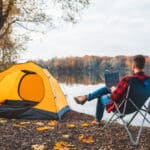

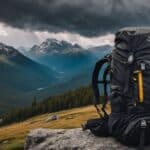
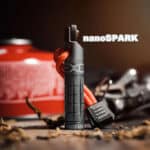
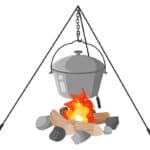

Leave a Reply